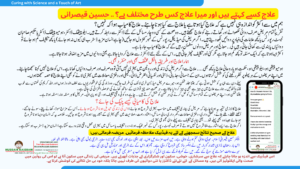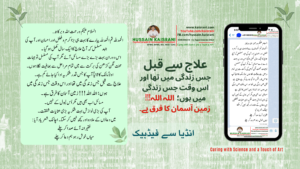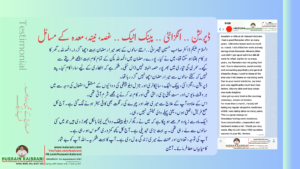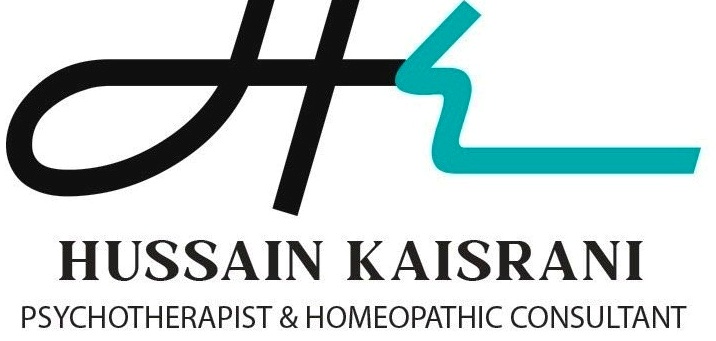Blepharitis (pronounced /bl?f?r?a?t?s/) is an ocular disease characterized by inflammation of the eyelid margins. Blepharitis may cause redness of the eyes, itching and irritation of the eyelids in one or both eyes. Its appearance is often confused with conjunctivitis and due to its recurring nature it is the most common cause of “recurrent conjunctivitis” in older people. It is also often mistaken for “dry eye” by patients due to the gritty sensation that may occur, however lubricating drops do little to improve the condition.
Classification of Blepharitis
There are two types of blepharitis:
- Anterior blepharitis affects the anterior margin (front) of the eyelid near the roots of the eyelashes. The causes are seborrheic dermatitis (similar to dandruff) and, more rarely, infection by Staphylococcus bacteria.
- Posterior blepharitis affects the posterior margin (back) of the eyelids, the part that makes contact with the eyes. This is caused by the oil glands present in this region. It is by far the most common type of blepharitis.
Seborrheic blepharitis
Seborrheic blepharitis, the most common type of blepharitis, is usually one part of the spectrum of seborrheic dermatitis which involves the scalp, lashes, eyebrows, nasolabial folds and ears. Treatment is best accomplished by a dermatologist.
Staphylococcal blepharitis
Staphlycoccal blepharitis is caused by infection of the anterior portion of the eyelid by Staphylococcal bacteria. As the infection progresses, the sufferer may begin to notice a foreign body sensation, matting of the lashes, and burning. Usually, the primary care physician will prescribe topical antibiotics for staphylococcal blepharitis. Unfortunately this is not an effective treatment.[citation needed] The condition can sometimes lead to a chalazion or a stye.[1]
Posterior blepharitis or rosacea-associated blepharitis
The most common type of blepharitis is often found in people with a Rosacea skin type. The oil glands in the lid of rosacea sufferers secrete a modified oil which leads to inflammation at the gland openings which are found at the edge of the lid.
Treatment and management for Blepharitis
The single most important treatment principle is a daily routine of lid margin hygiene, as described below. Such a routine needs to be convenient enough to be continued lifelong to avoid relapses as blepharitis is often a chronic condition.
A typical lid margin hygiene routine consists of 4 steps:
- Softening of lid margin debris and oils: Apply a warm wet compress to the lids – such as a washcloth with hot water – for about 2 minutes.
- Mechanical removal of lid margin debris: At end of shower routine, wash your face with a wash cloth. Use facial soap or non-burning baby shampoo (make sure to dilute the soap solution 1/10 with water first). Gently and repeatedly rub along the lid margins while eyes are closed.
- Antibiotic reduction of lid margin bacteria (at the discretion of your physician): After lid margin cleaning, spread small amount of prescription antibiotic ophthalmic ointment with finger tip along lid fissure while eyes closed. Use prior to bed time as opposed to in the morning to avoid blurry vision.
- Avoid the use of eye make-up until symptoms subside.
An alternative after washing is to coat the eyelids with a good quality hair conditioner. Leave in place for several minutes then rinse. The conditioner seems to break the bacteria / crusting /irritation cycle, and daily use can eliminate the symptoms.
The following guide is very common but is more challenging to perform by visually disabled or frail patients as it requires good motor skills and a mirror. Compared to above it does not bear any advantages:
- Apply hot compresses to both eyes for 5 minutes once to twice per day.
- After hot compresses, in front of a mirror, use a moist Q-tip soaked in a cup of water with a drop of baby shampoo. Rub along the lid margins while tilting the lid outward with the other hand.
- In front of mirror, place small drop of antibiotic ophthalmic ointment (e.g. erythromycin) in lower conjunctival sack while pulling lid away from eye with other hand.
Often the above is advised together with mild massage to mechanically empty glands located at the lid margin (Meibomian glands, Zeiss glands, Moll glands).[2]
Depending on the degree of inflammation of the lid margin, a combination of topical antibiotic and steroid drops or ointments can be prescribed to provide instant relief. However, this harbors significant risks such as increased intraocular pressure and posterior subcapsular cataract formation. Since cataract formation is irreversible and even intraocular hypertension might be (harboring the risk of glaucoma with permanent visual loss), both need to be checked for monthly. Steroid-induced cataracts and ocular hypertension can affect all ages.
If acne rosacea coexists, treatment should be focused on this skin disorder as the underlying cause together with the above lid margin hygiene routine. Typically, 100 mg doxycycline by mouth twice per day is prescribed for four to six weeks which can be tapered to 50 mg once daily for several years. Some physicians use a lower starting dose. Patients are instructed to continue use for at least two months before symptoms improve significantly. Contrary to common belief, use of tetracycline-type antibiotics is not primarily to treat bacterial infection but rather to inhibit matrix metalloproteinases resulting in thinning of oil gland secretions and change of the characteristic prominent capillary pattern.
Dermatologists treat blepharitis similarly to seborrheic dermatitis by using a safe topical anti-inflammatory medication like sulfacetamide or brief courses of a mild topical steroid. Although anti-fungals like ketoconazole (Nizoral) are commonly prescribed for seborrheic dermatitis, dermatologists and optometrists usually do not prescribe anti-fungals for seborrheic blepharitis.[3]
If these conventional treatments for blepharitis do not bring relief, patients may consider allergy testing and ocular antihistamines. Allergic responses to dust mite feces and other allergens can cause lid inflammation, ocular irritation, and dry eyes. Prescription optical antihistamines and over-the-counter optical antihistamines are very safe and can bring almost immediate relief to patients whose lid inflammation is caused by allergies.
Homeopathy Treatment for Blepharitis
Keywords: homeopathy, homeopathic, treatment, cure, remedy, remedies, medicine
Homeopathy treats the person as a whole. It means that homeopathic treatment focuses on the patient as a person, as well as his pathological condition. The homeopathic medicines are selected after a full individualizing examination and case-analysis, which includes the medical history of the patient, physical and mental constitution, family history, presenting symptoms, underlying pathology, possible causative factors etc. A miasmatic tendency (predisposition/susceptibility) is also often taken into account for the treatment of chronic conditions. A homeopathy doctor tries to treat more than just the presenting symptoms. The focus is usually on what caused the disease condition? Why ‘this patient’ is sick ‘this way’. The disease diagnosis is important but in homeopathy, the cause of disease is not just probed to the level of bacteria and viruses. Other factors like mental, emotional and physical stress that could predispose a person to illness are also looked for. No a days, even modern medicine also considers a large number of diseases as psychosomatic. The correct homeopathy remedy tries to correct this disease predisposition. The focus is not on curing the disease but to cure the person who is sick, to restore the health. If a disease pathology is not very advanced, homeopathy remedies do give a hope for cure but even in incurable cases, the quality of life can be greatly improved with homeopathic medicines.
The homeopathic remedies (medicines) given below indicate the therapeutic affinity but this is not a complete and definite guide to the homeopathy treatment of this condition. The symptoms listed against each homeopathic remedy may not be directly related to this disease because in homeopathy general symptoms and constitutional indications are also taken into account for selecting a remedy. To study any of the following remedies in more detail, please visit the Materia Medica section at www.kaisrani.com.
None of these medicines should be taken without professional advice and guidance.
Homeopathy Remedies for Blepharitis:
Acon., act-sp., anac., ant-c., arg-m., arg-n., apis., ars., arund., bar-c., bell., berb., calc-s., carb-an., carb-s., caust., cinnb., cocc., com., con., crot-t., dig., euph., graph., hep., hydr., hyos., iris., kali-ar., kali-bi., kali-c., kali-s., kreos., lach., lil-t., lyc., med., meph., merc., mez., nat-a., nat-c., nat-m., nit-ac., petr., phos., psor., puls., rhus-t., sang., sanic., sarr., sars., seneg., sep., sil., spig., stann., staph., stram., sulph.,m tell., ter., thuj., uran., verat., zinc.
References
- ^ Blepharitis, Stye and Chalazion
- ^ Moorfields eye hospital (UK) Patient information leaflet: Blepharitis – Lid Hygiene Advice For Patients
- ^ Derbel M, Benzina Z, Ghorbel I, Abdelmoula S, Makni F, Ayadi A, Feki J (2005). “[Malassezia fungal blepharitis: a case report]”. J Fr Ophtalmol 28 (8): 862–5. doi:10.1016/S0181-5512(05)81007-1. PMID 16249768.
Related posts:
- Sebaceous cyst – Homeopathy Treatment and Homeopathic Remedies
- Impetigo – Homeopathy Treatment and Homeopathic Remedies
- Amaurosis – Homeopathy Treatment and Homeopathic Remedies





